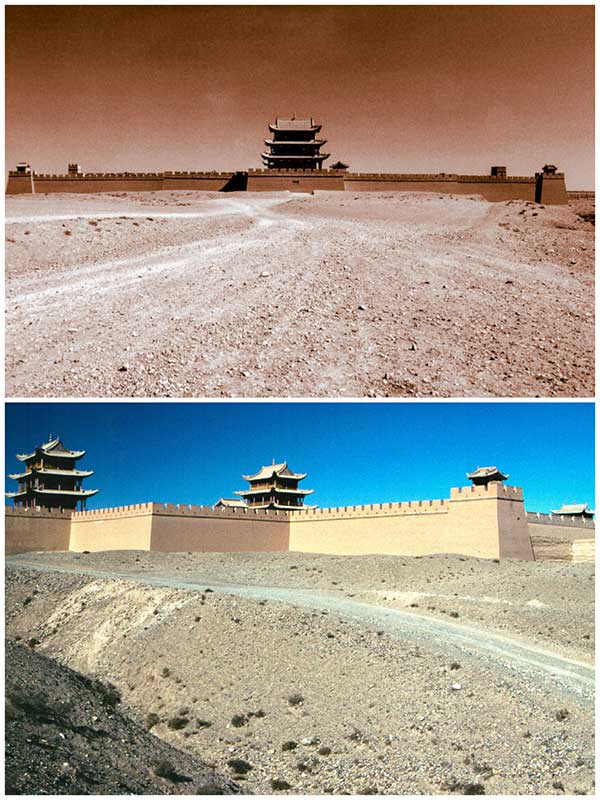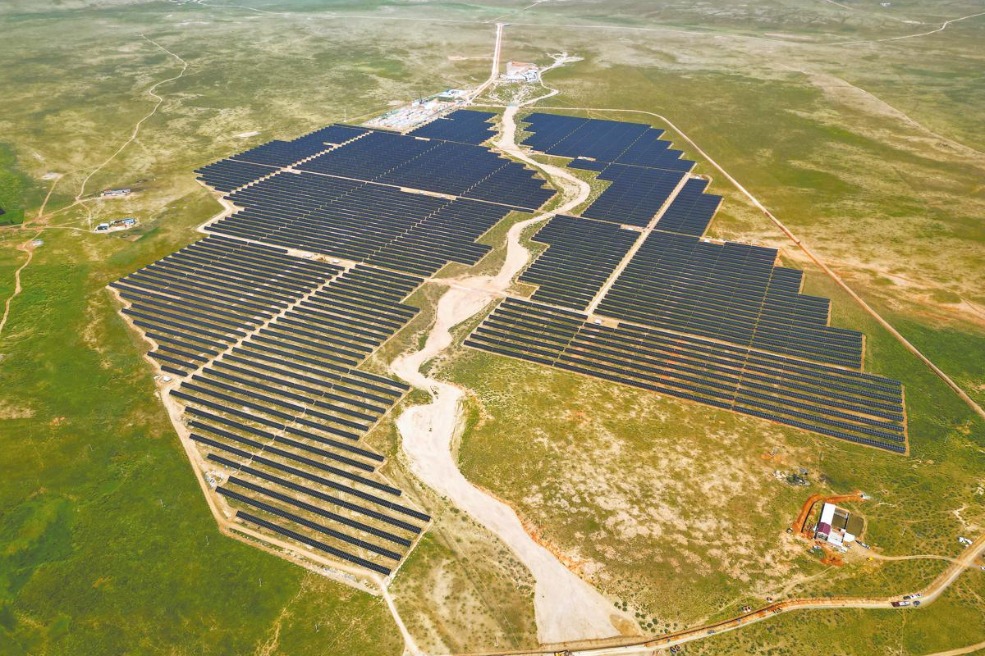Walking along ancient structures at Jiayuguan


Mostly rebuilt, the structure was quite narrow, with battlements on its west-facing side. An initially gentle walk soon became very steep. I moved slowly, stopping frequently to photograph and take in the scenery. Mostly exposed rock, the land was very dry with virtually no vegetation on surrounding peaks and slopes. Directly below the wall, a green oasis including both settlement and agriculture stood out within the harsh emptiness of the desert. With no humidity, visibility was excellent as I looked back toward the fort, Jiayuguan, and the distant glacial Qilian peaks.
The next morning, back at the fort, I decided to walk eight kilometers toward the end of the Great Wall. Shortly after leaving the fort, I crossed the main highway and railway, both piercing the wall. I felt totally alone. I would regularly stop, surrounded by almost total silence, and think of what this area must have been like in the past, soldiers marching all around this once-strategic area.
As I walked, I became aware the only sounds were of my boots crunching across sand and rock. Maybe it was the isolation, but I got a little worried about scorpions and snakes before arriving at 14-meter-high Diyi Dun. Dating from 1539, it stands as the first beacon tower on the Great Wall. With the wall likened to a mighty dragon winding through China’s northern borderlands, Diyi Dun is seen as the dragon’s tail.

































